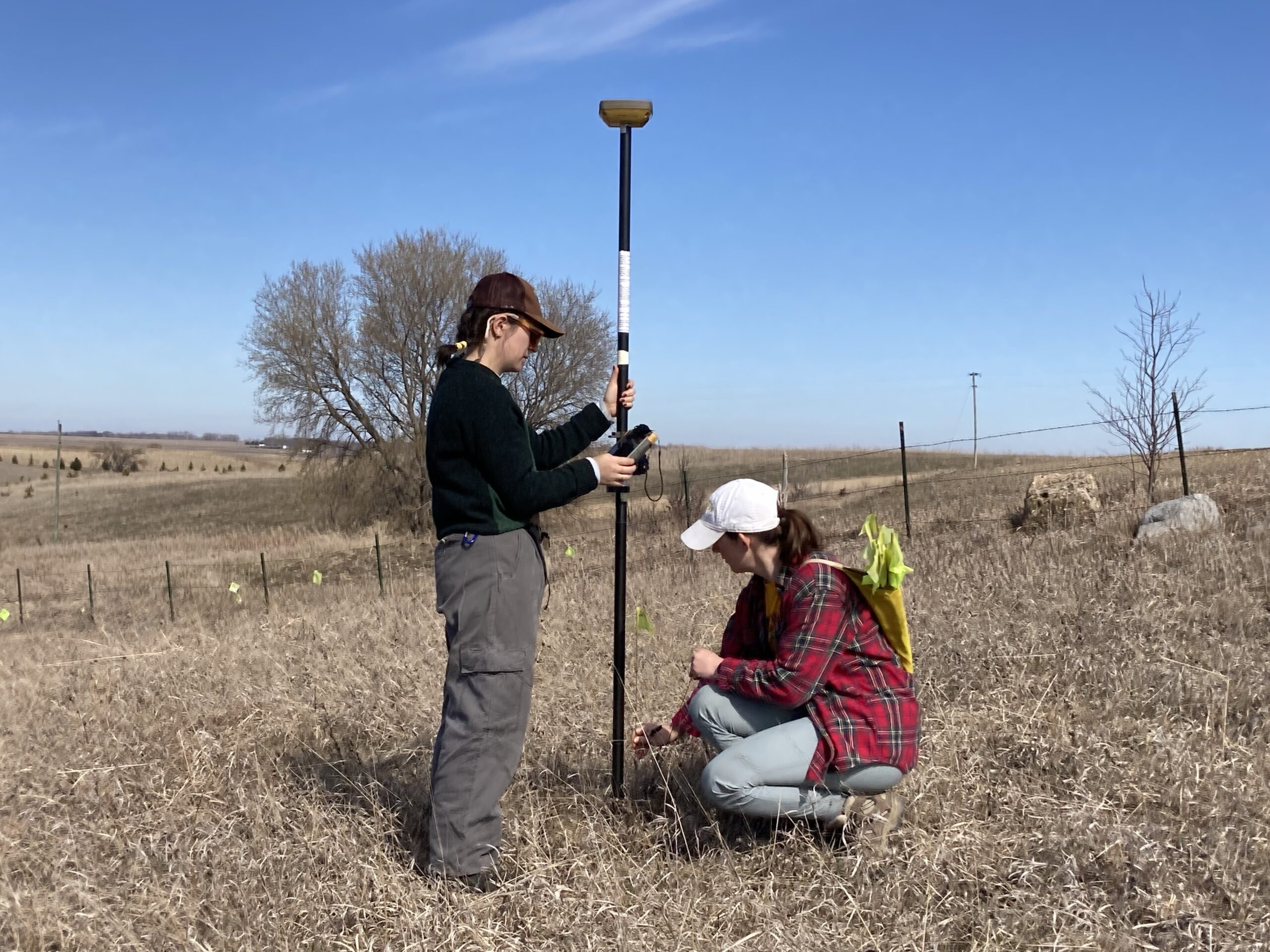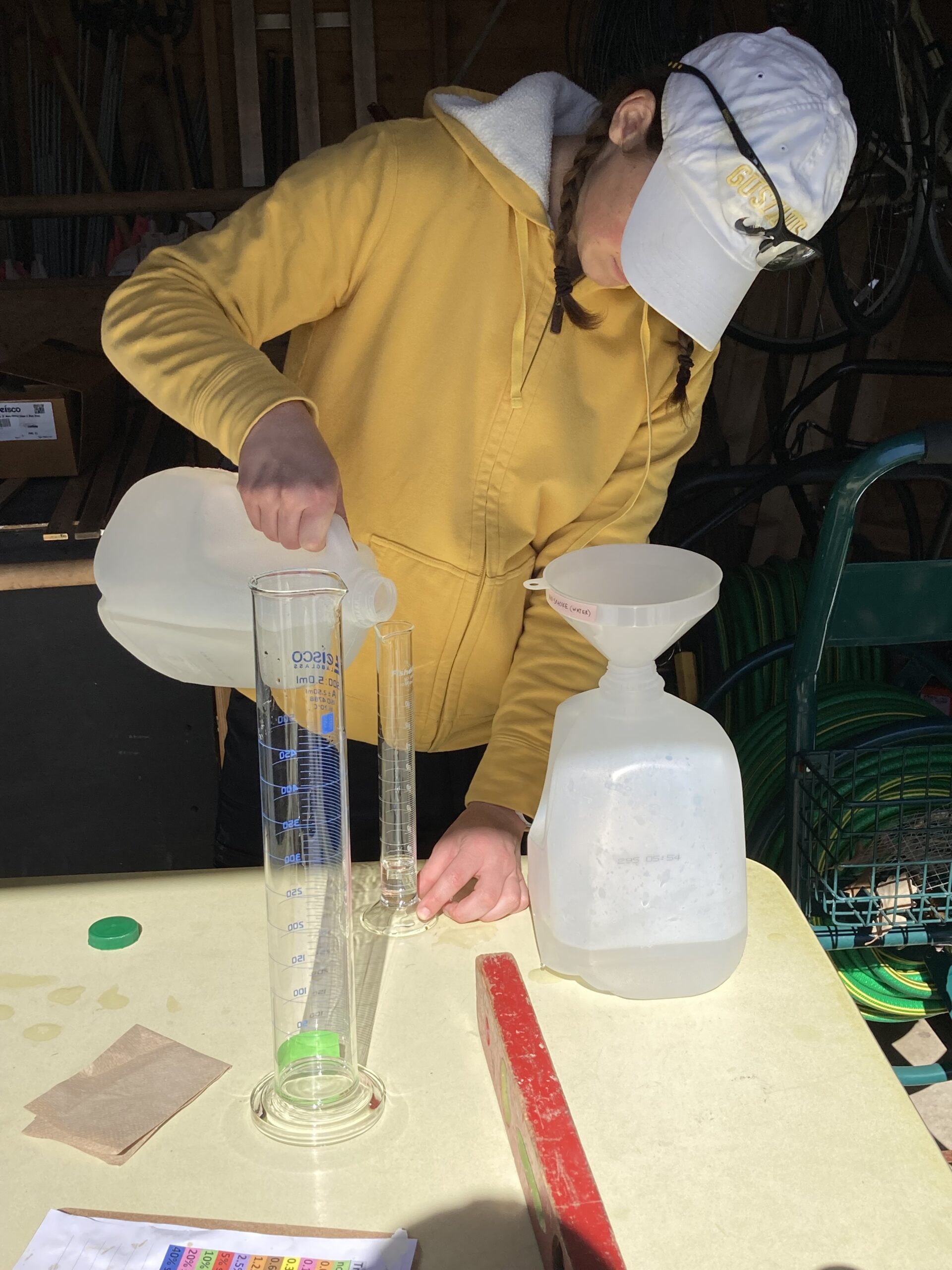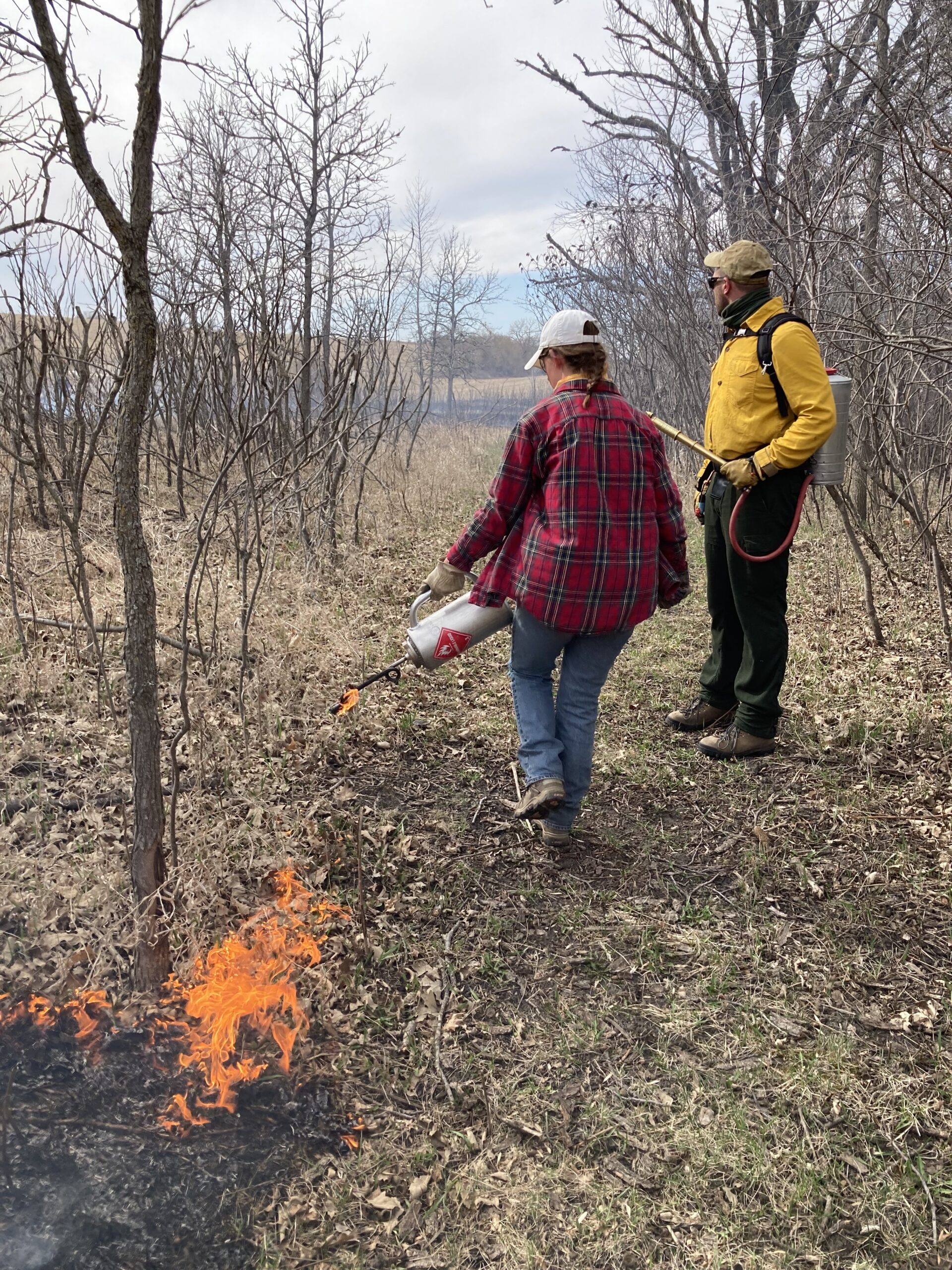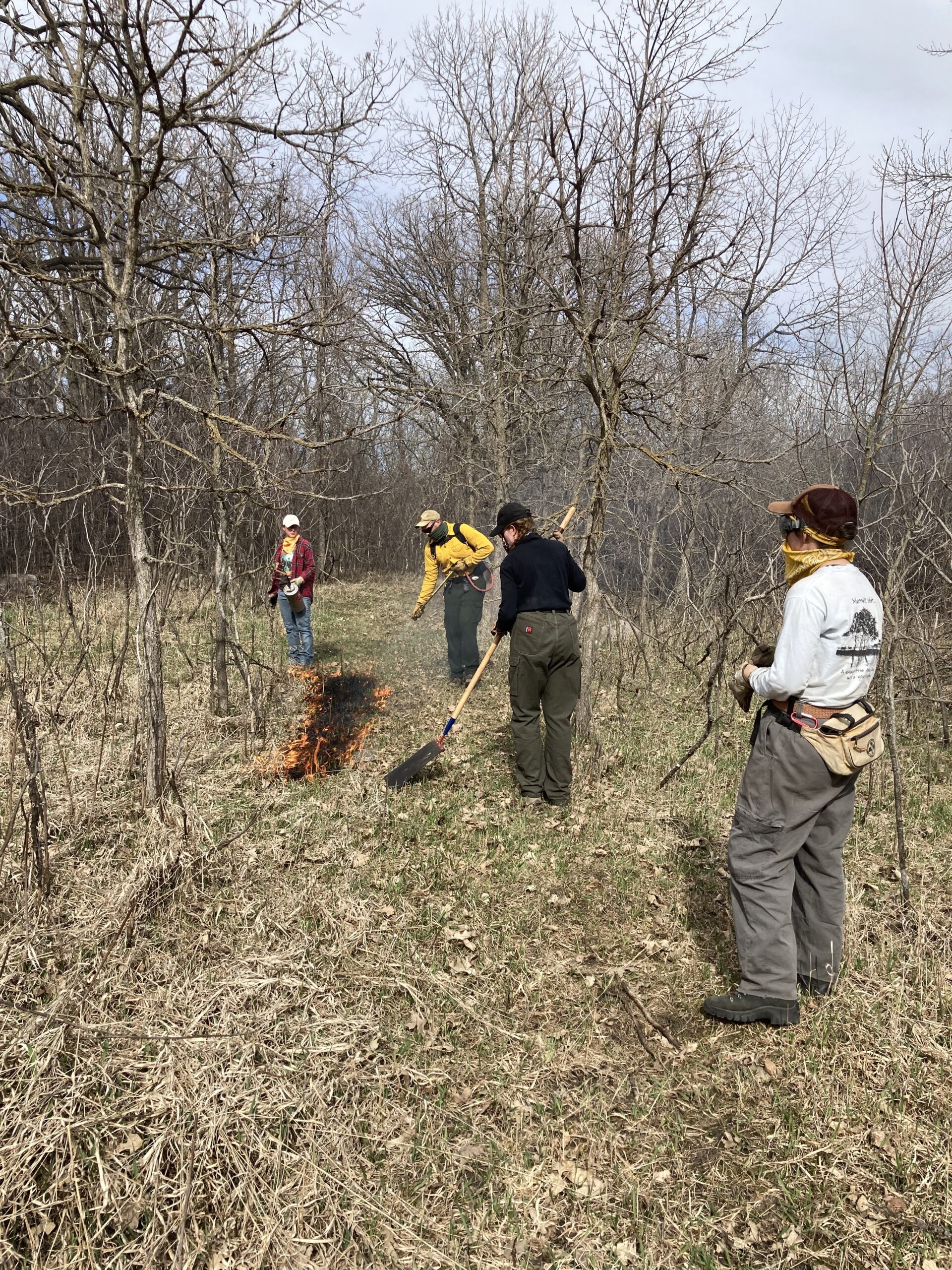Plants often flower vigorously after a fire, but what aspect of fire causes these increases in flowering? Today, we are one step closer to finding out if smoke is the culprit. In the fall, we applied liquid smoke to 110 plants, and today, we applied the remaining 110 treatments for the smoke experiment!
Last summer, we flagged all of the Echinacea plants for the experiment and assigned a number to each plant. However, we weren’t sure if any of our flags survived after the profusion of snow this winter. With help from El and Jan, we revisited all of the smoke plants using the GPS units. Surprisingly, most of the flags were still present, but we relabeled any illegible, faded, or ripped flags.



Next, Lindsey and I measured and mixed our 11 concentrations of liquid smoke. Thanks to Allen for supplying us with more empty jugs! Back in the field, we applied half of the smoke treatments in the morning and half in the afternoon, following the same protocol as in the fall. The ground was very dry after recent windy days, so the liquid rapidly soaked into the soil in most places.
Our experiment was not the only source of smoke today. There wasn’t enough wind to burn at prairie remnants near roads, so instead, we burned an area that Stuart is restoring nearing P1, called Center Field. There wasn’t a lot of fuel, but the grass and oak leaves were very dry and crispy, so the burn went much better than expected. We all got a chance to practice using the drip torch, and the plants will enjoy the fire, too!




Leave a Reply